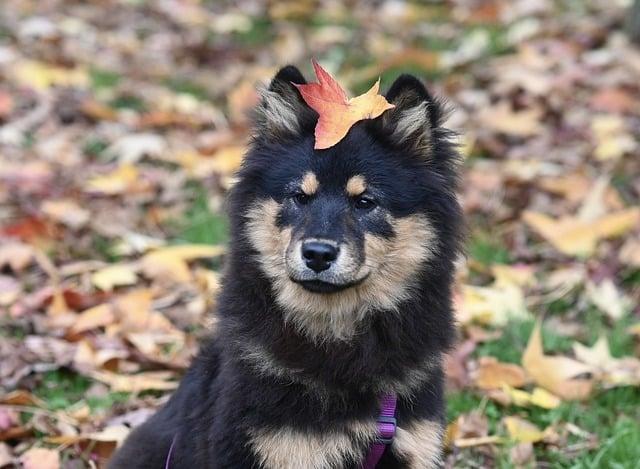In a quaint little town, a spirited Jack Russell Terrier named Max became the talk of the neighborhood. At 18 years old, he still chased squirrels and played fetch with boundless energy. His secret? A balanced diet, regular vet check-ups, and plenty of love. Research shows that smaller breeds like Jack Russells often outlive their larger counterparts, with lifespans reaching up to 20 years. If you’re considering a furry companion, think small! A Jack Russell might just be the perfect choice for a long, joyful companionship.
Contents
- Understanding Longevity in Dog Breeds: Key Factors That Influence Lifespan
- Top Dog Breeds Known for Their Remarkable Longevity
- Essential Care Practices to Extend Your Dogs Life
- Making Informed Choices: Selecting the Right Breed for a Long and Healthy Life
- Q&A
Understanding Longevity in Dog Breeds: Key Factors That Influence Lifespan
When considering the longevity of dog breeds, several key factors come into play that can significantly influence a dog’s lifespan. **Genetics** is one of the most critical elements; certain breeds are predisposed to specific health conditions that can shorten their lives. For instance, larger breeds like Great Danes often face issues such as hip dysplasia and heart problems, while smaller breeds tend to have fewer genetic health issues, contributing to their longer lifespans.
Another important factor is **size**. Generally, smaller dog breeds tend to live longer than their larger counterparts. This phenomenon can be attributed to metabolic rates and the stress placed on their bodies. For example, a Chihuahua may live well into its late teens, while a Mastiff may only reach around 8 to 10 years of age. Understanding this size-related trend can help prospective dog owners make informed decisions about which breed might best fit their lifestyle and longevity expectations.
**Lifestyle and care** also play a significant role in determining a dog’s lifespan. Regular veterinary check-ups, a balanced diet, and adequate exercise can enhance a dog’s quality of life and longevity. Preventative care, such as vaccinations and dental hygiene, can mitigate health risks that may otherwise lead to early mortality. Owners who prioritize their dog’s health and well-being often see a marked improvement in their pet’s lifespan.
Lastly, **environment** is a crucial factor that cannot be overlooked. Dogs that live in a stable, loving home with minimal stress tend to thrive longer than those in chaotic or neglectful situations. Factors such as exposure to toxins, access to safe outdoor spaces, and socialization with other animals and people can all contribute to a dog’s overall health and longevity. By creating a nurturing environment, dog owners can significantly impact their pet’s lifespan, ensuring they enjoy many happy years together.
Top Dog Breeds Known for Their Remarkable Longevity
When it comes to selecting a canine companion, longevity is often a key consideration for many dog lovers. Certain breeds have earned a reputation for their impressive lifespans, making them ideal choices for those seeking a long-term furry friend. Among these breeds, you’ll find a mix of small and large dogs, each with unique characteristics that contribute to their extended years.
**Chihuahuas** are often celebrated for their remarkable longevity, frequently living into their late teens. Their small size and low susceptibility to certain health issues contribute to their extended lifespan. Additionally, their spirited personalities and affectionate nature make them delightful companions, ensuring that they remain a beloved part of the family for many years.
Another breed known for its longevity is the **Dachshund**. These charming little dogs typically live between 12 to 16 years, and their playful demeanor and loyalty make them cherished pets. Their unique body shape, combined with a generally robust health profile, allows them to thrive well into their golden years, bringing joy to their owners throughout their lives.
**Poodles**, whether standard, miniature, or toy, are also noteworthy for their longevity, often reaching ages of 12 to 15 years or more. Their intelligence and trainability make them a favorite among dog owners, while their hypoallergenic coats appeal to those with allergies. With proper care and regular exercise, Poodles can maintain their vitality, ensuring that they remain active and engaged well into their senior years.
Essential Care Practices to Extend Your Dogs Life
To ensure your canine companion enjoys a long and healthy life, implementing essential care practices is crucial. **Regular veterinary check-ups** are a cornerstone of preventive health care. These visits allow for early detection of potential health issues, vaccinations, and dental care, which is often overlooked but vital for overall well-being. Establishing a routine with your veterinarian can help tailor a health plan specific to your dog’s needs.
Another significant aspect of extending your dog’s life is **maintaining a balanced diet**. High-quality dog food that meets the nutritional requirements for your dog’s breed, age, and activity level can make a substantial difference. Consider incorporating fresh fruits and vegetables as treats, and always ensure that your dog has access to clean, fresh water. Avoid overfeeding, as obesity can lead to numerous health problems, including joint issues and diabetes.
**Regular exercise** is not just beneficial for physical health; it also plays a vital role in mental stimulation. Engaging your dog in daily activities, such as walks, playtime, or agility training, can help maintain a healthy weight and reduce behavioral problems. Tailor the exercise routine to your dog’s breed and energy level, ensuring that it remains enjoyable and safe. Remember, a tired dog is a happy dog!
Lastly, **mental enrichment** is essential for your dog’s longevity. Activities that challenge your dog’s mind, such as puzzle toys, training sessions, or interactive games, can help prevent cognitive decline as they age. Socialization with other dogs and people also contributes to a well-rounded and happy pet. By fostering a stimulating environment, you can enhance your dog’s quality of life and promote longevity.
Making Informed Choices: Selecting the Right Breed for a Long and Healthy Life
When considering a canine companion, the longevity of a breed is a crucial factor that can significantly influence your decision. Certain breeds are known for their remarkable lifespan, often living well into their teens. This longevity not only allows for more years of companionship but also provides the opportunity to create lasting memories. Understanding the traits and health predispositions of various breeds can help you make a choice that aligns with your lifestyle and expectations.
Small dog breeds tend to have longer lifespans compared to their larger counterparts. For instance, breeds such as the **Chihuahua**, **Dachshund**, and **Toy Poodle** often live between 12 to 20 years. Their smaller size contributes to their longevity, as they generally experience fewer health issues related to weight and joint problems. Additionally, these breeds often require less exercise, making them suitable for individuals or families with a more sedentary lifestyle.
On the other hand, some medium-sized breeds also boast impressive lifespans. The **Beagle**, **Cocker Spaniel**, and **Australian Shepherd** are known to live around 12 to 15 years, provided they receive proper care and regular veterinary check-ups. These breeds are not only affectionate and loyal but also tend to be adaptable, fitting well into various living situations, from apartments to larger homes with yards.
It’s essential to consider the breed’s health history and potential genetic issues when making your choice. Researching reputable breeders who prioritize health testing can significantly reduce the risk of hereditary conditions. Furthermore, adopting from shelters or rescue organizations can also be a rewarding option, as mixed-breed dogs often inherit the best traits from their parent breeds, leading to a longer and healthier life. Ultimately, selecting a breed that aligns with your lifestyle and values will ensure a fulfilling and enduring relationship with your furry friend.
Q&A
-
What is the breed of dog that typically lives the longest?
The Chihuahua is often recognized as one of the longest-living dog breeds, with a lifespan that can reach up to 15-20 years. Other breeds known for their longevity include the Dachshund, Toy Poodle, and Shih Tzu.
-
What factors contribute to a dog’s lifespan?
Several factors influence a dog’s lifespan, including:
- Genetics: Some breeds are predisposed to certain health issues.
- Size: Smaller breeds generally live longer than larger ones.
- Diet: A balanced diet can significantly impact health and longevity.
- Exercise: Regular physical activity promotes overall well-being.
-
How can I help my dog live a longer life?
To enhance your dog’s lifespan, consider the following:
- Regular Vet Check-ups: Routine health screenings can catch issues early.
- Proper Nutrition: Feed high-quality dog food tailored to your dog’s needs.
- Exercise: Ensure your dog gets daily physical activity to maintain a healthy weight.
- Dental Care: Good oral hygiene can prevent serious health problems.
-
Are mixed-breed dogs healthier than purebreds?
Generally, mixed-breed dogs tend to have fewer genetic health issues compared to purebreds, which can lead to a longer lifespan. However, individual care and genetics still play a crucial role in the overall health of any dog.
choosing a dog breed known for longevity not only enhances your companionship but also enriches your life with years of joy. Prioritize health, care, and love, and you’ll ensure a fulfilling journey with your furry friend. Choose wisely!




